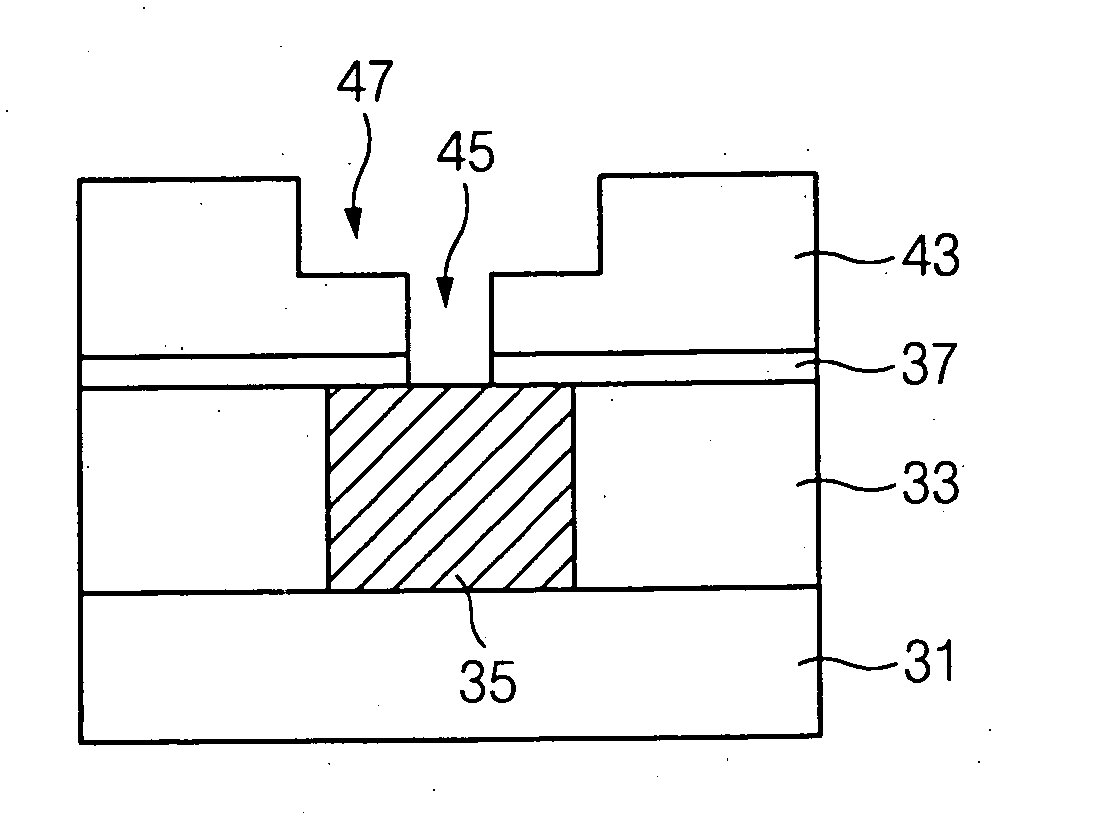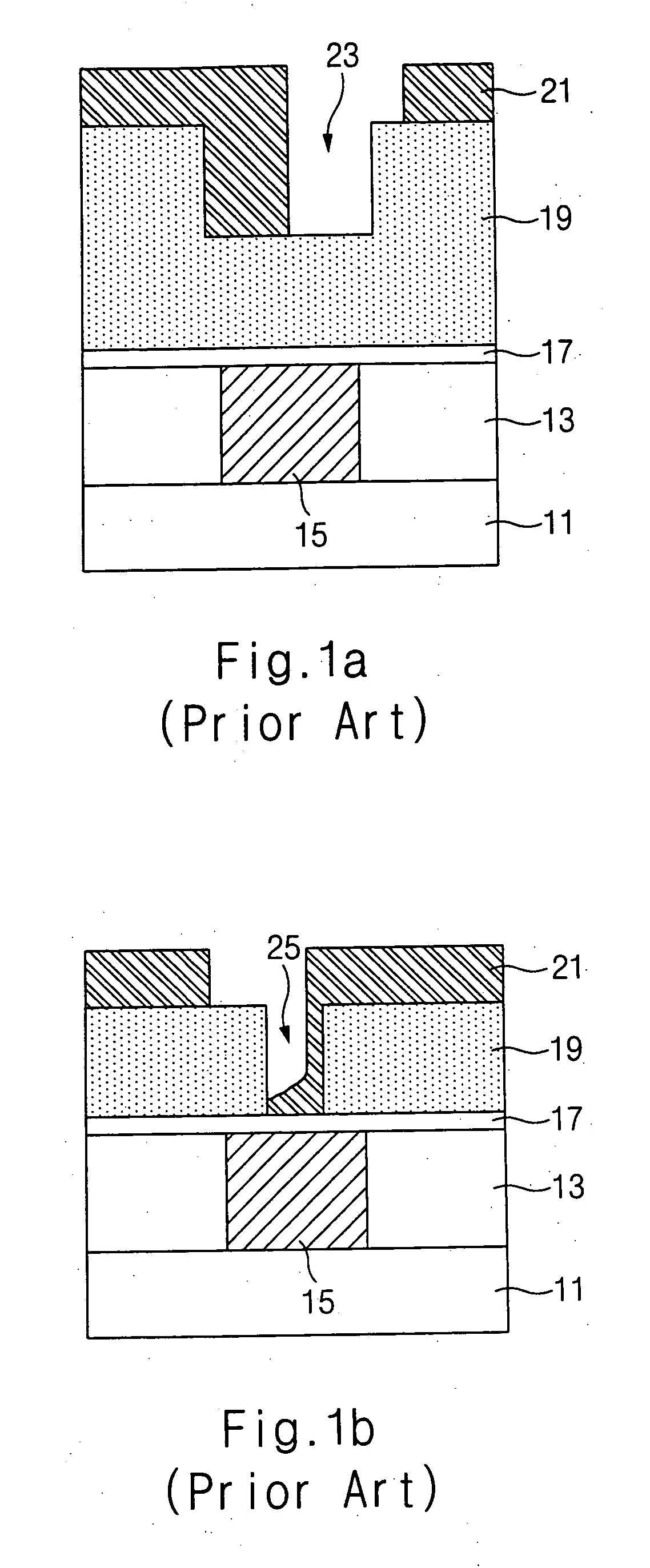Method for forming conductive wires of semiconductor device
a technology of conductive wires and semiconductor devices, which is applied in the direction of semiconductor devices, basic electric elements, electrical equipment, etc., can solve the problems of lithography overlay, difficult etching of copper wires using conventional etching materials, and known methods having problems with lithography overlay,
- Summary
- Abstract
- Description
- Claims
- Application Information
AI Technical Summary
Benefits of technology
Problems solved by technology
Method used
Image
Examples
Embodiment Construction
[0026] Reference will now be made in detail to exemplary embodiments of the invention, examples of which are illustrated in the accompanying drawings. Wherever possible, the same reference numbers will be used throughout the drawings to refer to the same or like parts.
[0027] Conductive wires of a semiconductor device may be formed, for example, to prevent misalignment and improve the device's electric characteristics. Engraved polycrystalline silicon patterns are formed where a via / contact plug and an upper metal wire are located based on a notching phenomenon. The notching phenomenon uses the different etching selectivity between the polycrystalline silicon layer and lower film.
[0028] When the etching selectivity ratio between a polycrystalline silicon layer and a lower film is 5:1 to 500:1, a notching phenomenon may occur during the etching process of the polycrystalline silicon layer. The notching phenomenon allows an engraved polycrystalline silicon layer pattern to form on the ...
PUM
| Property | Measurement | Unit |
|---|---|---|
| temperature | aaaaa | aaaaa |
| thickness | aaaaa | aaaaa |
| temperature | aaaaa | aaaaa |
Abstract
Description
Claims
Application Information
 Login to View More
Login to View More - R&D
- Intellectual Property
- Life Sciences
- Materials
- Tech Scout
- Unparalleled Data Quality
- Higher Quality Content
- 60% Fewer Hallucinations
Browse by: Latest US Patents, China's latest patents, Technical Efficacy Thesaurus, Application Domain, Technology Topic, Popular Technical Reports.
© 2025 PatSnap. All rights reserved.Legal|Privacy policy|Modern Slavery Act Transparency Statement|Sitemap|About US| Contact US: help@patsnap.com



